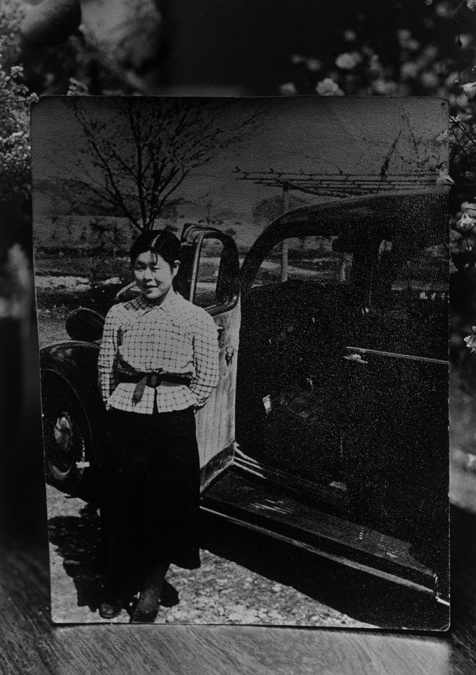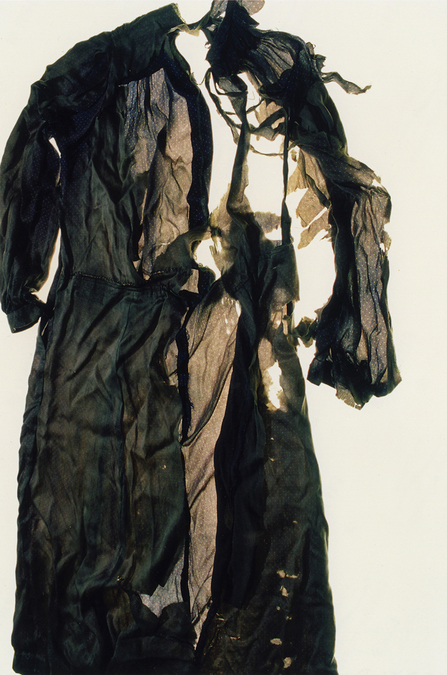Ishiuchi Miyako: Capturing Defiance
Ishiuchi Miyako's first solo show in Scotland features her haunting photographs reflecting on conflict, motherhood and the life of Frida Kahlo
Stills has been dipped in silver and a deep cobalt blue. Haunting photographs divergent in size have been waywardly hung, mimicking the disobedience of their creator, Ishiuchi Miyako (born 1947). The gallery space journeys through three major bodies of work, commencing with hiroshima, followed by Mother’s, and finishing with Frida.
A self-declared rebel, Miyako grew up on the largest military base in Asia. As a young girl, she lived in the "deep shadow" cast by the violence of the American armed forces which invigorated "resentment" but also "profound longing" within her and, in turn, within her photographic practice. She came of age in the dark room, gripped by the alchemical processes of analogue photography and thinking about American culture through an astute, critical lens. For many years she shot in black and white, although the display at Stills presents an amalgamation of her career in colour as well as monochrome.
Defying the gallery route, let’s start in the middle of the exhibition. Ambivalence during her formative years also saturated her relationship with her mother. Until Miyako’s mother’s death, she struggled to objectively comprehend her mother as a separate entity with hopes and desires of her own. The series embodies a kind of maternal reconciliation, in which Miyako learns to see her mother as a fully-fledged woman through the earthly possessions she left behind.
The series Mother’s marks a turning point in Miyako’s practice; it is when she began shooting in colour because that’s how "bright red lipstick needs to be photographed." This bright red lipstick (#38) stands erect, practically unused, adjacent to a photograph of an ornate lipstick case, castrated of the lipstick itself as if it’s been bitten into. On the other side of the wall is an assortment of her mother’s dentures which have been grotesquely yet playfully captured, speaking to the missing lips which were occasionally coated in red. Some objects captured are more glamorous and private than others, such as lacy lingerie, while the close-up of a brush still entangled with strands of wiry hair points to the absence of a head of thinning hair. The photograph of Miyako’s mother beside her taxi is jarring, as viewers come face-to-face with the individual and her profession.
Mother’s documents remnants of femininity, including its scars, but is also a daughter’s final act of defiance. The photographer’s painfully shy mother would not have approved of exhibiting her lingerie in public; Miyako cheekily remarks: "Sorry mum, but I exhibited it anyway." In 2005, this body of work was exposed to an international market on a vast scale, representing Japan at the Venice Biennale. It is on this global stage that a curator at the Frida Kahlo Museum became aware of Miyako’s work, which led to a newly commissioned series titled Frida.
Stills’ silver and blue walls are based on the colours of La Casa Azul (the Blue House), where Kahlo was born, lived and died. Miyako was invited to capture Kahlo’s belongings, ranging from a cigarette case to a corset decorated with the Hammer and Sickle. These objects were photographed in Kahlo’s garden, and unknown to Miyako at the time due to the nature of shooting on film, the powerful blue of the walls reflected onto the subject. Just as Kahlo used apparel to present herself as taller than her actual size, her belongings have been enlarged, indicative of the Mexican artist’s enormous legacy.
"The atomic bomb dropped 77 years ago, but much remains unresolved," reflects Miyako. Given the global threat of nuclear war and the longevity of Hiroshima’s impact, the appellation of post in post-war Japan may be premature. To demonstrate this, Miyako zooms in on the micro level, building a picture of grief through what remains tangible: the victims’ possessions. Taken from the Hiroshima Peace Memorial Museum, where year upon year bereaved families donate belongings, Miyako laid items of clothing on a lightbox to capture an aerial view. These objects, some torn, burnt and discoloured, are more ghostly compared to those captured in Mother’s and Frida, perhaps by the way they have been strewn across the lightbox, communicating the absence of their beholder. In particular, Miyako’s photograph of a pair of socks feels especially tangible, their size almost to scale and filling the frame as if the victim has only just removed their feet.
There’s a powerful irony when Miyako wishes that "I don’t want to leave anything behind…only my photographs." The exhibition is certainly grief-stricken. But, for subject matters which are so challenging to navigate, the fact that the photographs are not hung in a straight line instils a sense of cathartic playfulness. By capturing what is absent, Miyako goes beyond the limitations of static photography. There are pleasing visual rhymes across the gallery space (especially between Mother’s and Frida) as Miyako encourages viewers to string together the absent subjects’ personalities through material goods.
Ishiuchi Miyako, Stills until 8 Oct

